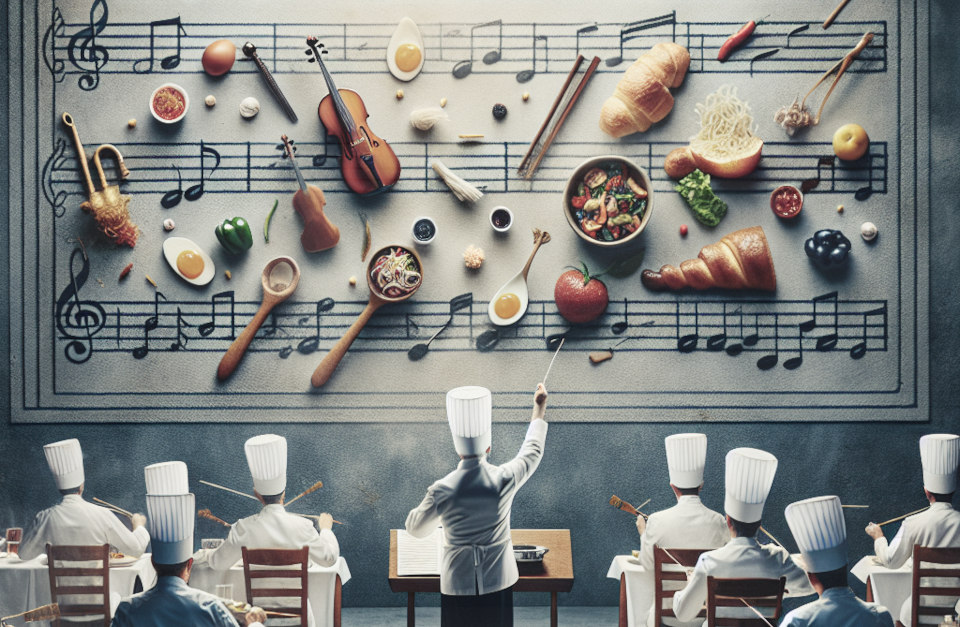Um, Tasty

What makes a meal taste good? To begin our quest, let us delve into the realm of music, I feel quite at home there so this is just me being me. Taste is like a symphony, each ingredient playing its own unique instrument to create a harmonious masterpiece. Just as a conductor brings together different sections of an orchestra, a skilled chef orchestrates flavors to create a delightful culinary experience.
Now, if you find yourself craving further knowledge on this subject, I highly recommend diving into the works of renowned food critic and writer Ruth Reichl. Her book “Garlic and Sapphires” delves deep into the world of taste and offers invaluable insights from her experiences as the New York Times restaurant critic.
Ruth Reichl, world-renowned food critic and editor in chief of Gourmet magazine, knows a thing or two about food. She also knows that as the most important food critic in the country, you need to be anonymous when reviewing some of the most high-profile establishments in the biggest restaurant town in the world–a charge she took very seriously, taking on the guise of a series of eccentric personalities. In Garlic and Sapphires, Reichl reveals the comic absurdity, artifice, and excellence to be found in the sumptuously appointed stages of the epicurean world and gives us–along with some of her favorite recipes and reviews–her remarkable reflections on how one’s outer appearance can influence one’s inner character, expectations, and appetites, not to mention the quality of service one receives.
While there is no one-size-fits-all answer to what makes a meal taste good, there are certain aspects that deserve emphasis. The quality of ingredients plays a significant role in elevating any dish. Freshness and sourcing are key factors that can make or break the final outcome. So tread carefully and choose wisely when selecting your culinary companions.
But let us not forget cautionary advice in our pursuit of gastronomic delight.
Avoid overindulgence in excessive seasoning or overpowering flavors; they may drown out the subtler nuances waiting to be discovered. Sometimes less is truly more when it comes to creating a memorable dish.
In our quest for flavor perfection, we must also consider alternative methods or approaches. Experimentation is the spice of life (pun intended), so don’t shy away from trying new combinations or techniques in your kitchen laboratory. Who knows? You might stumble upon an unexpected flavor pairing that will leave your taste buds dancing with joy.
Now, allow me to offer you some specific examples to explore related subjects.
Consider the delicate balance of sweet and savory in a classic dish like beef bourguignon, or the contrasting textures of creamy risotto with a crispy seared scallop on top. These examples highlight the importance of balance and contrast in creating a truly delectable experience.
In our exploration, we cannot ignore the historical context and past issues that have shaped our understanding of taste. Different cultures have developed their own unique flavor profiles, influenced by geography, climate, and available ingredients. For instance, the spicy cuisine of Southeast Asia contrasts sharply with the subtle flavors of traditional Japanese dishes.
As we continue our journey, let us not forget to appreciate the improvements made in the culinary world over time. Techniques such as sous vide cooking or molecular gastronomy have pushed boundaries and expanded our palates to new heights. The use of descriptive language can transport us to a realm where words alone can evoke mouth-watering sensations.
Speaking of technical terminology, it is worth mentioning that understanding functionalities and features such as umami can greatly enhance our appreciation for taste. Umami, often described as the fifth taste alongside sweet, sour, salty, and bitter, adds depth and richness to dishes. It can be found in ingredients like mushrooms, cheese, or soy sauce.
Now that we’ve covered some theoretical ground, let me share a personal tip based on my own culinary adventures: don’t be afraid to trust your instincts and experiment with different flavors.
Some of my most memorable meals were born out of unconventional combinations that defied traditional norms.
Before I conclude this rambling post (and apologize for its somewhat scattered nature), I must reveal my emotional connection to food. It is through food that I have celebrated life’s milestones – from birthdays to anniversaries – creating lasting memories around the table with loved ones. Food really is that special.
In essence, what makes a meal taste good is subjective yet incredibly personal. It evolves over time as we grow and explore diverse perspectives. So, my fellow gastronomes, embrace the journey, savor every bite, and let your taste buds guide you on an enchanting adventure of flavors. Bon appétit!



